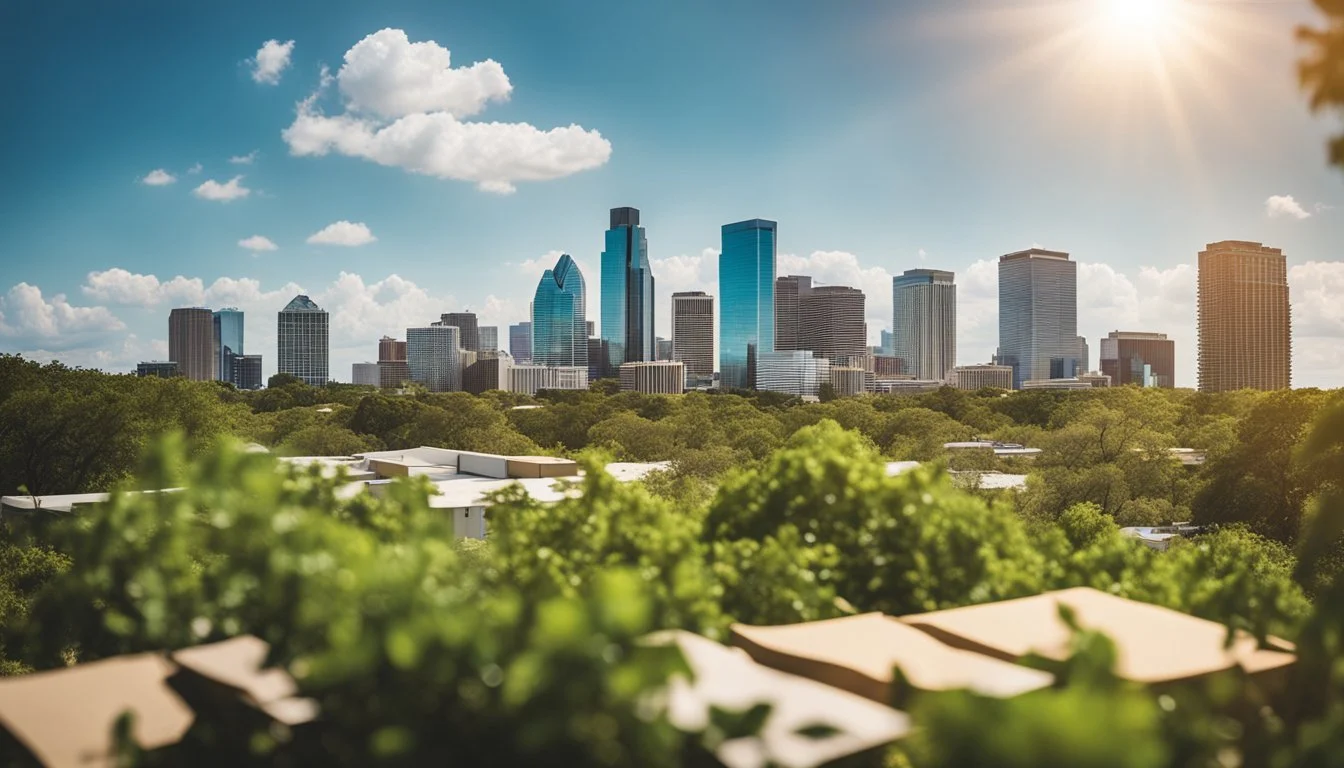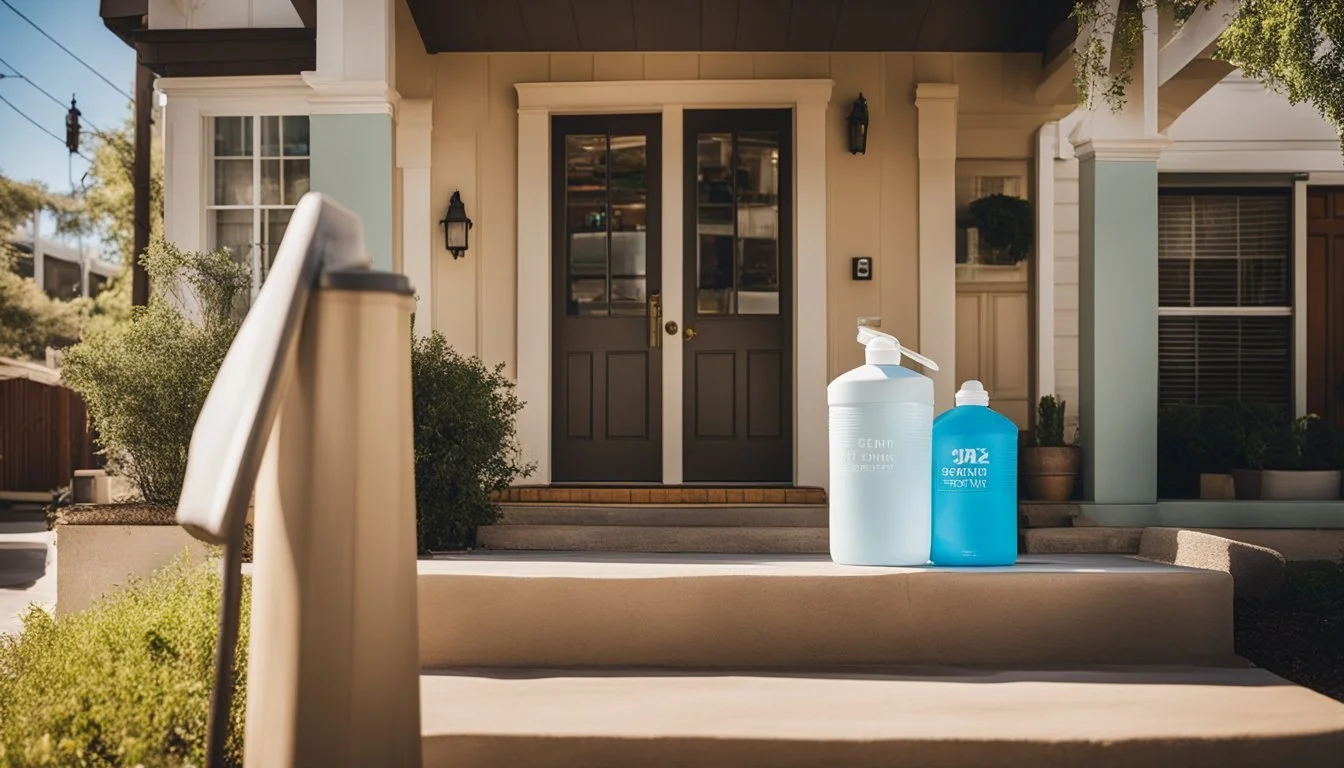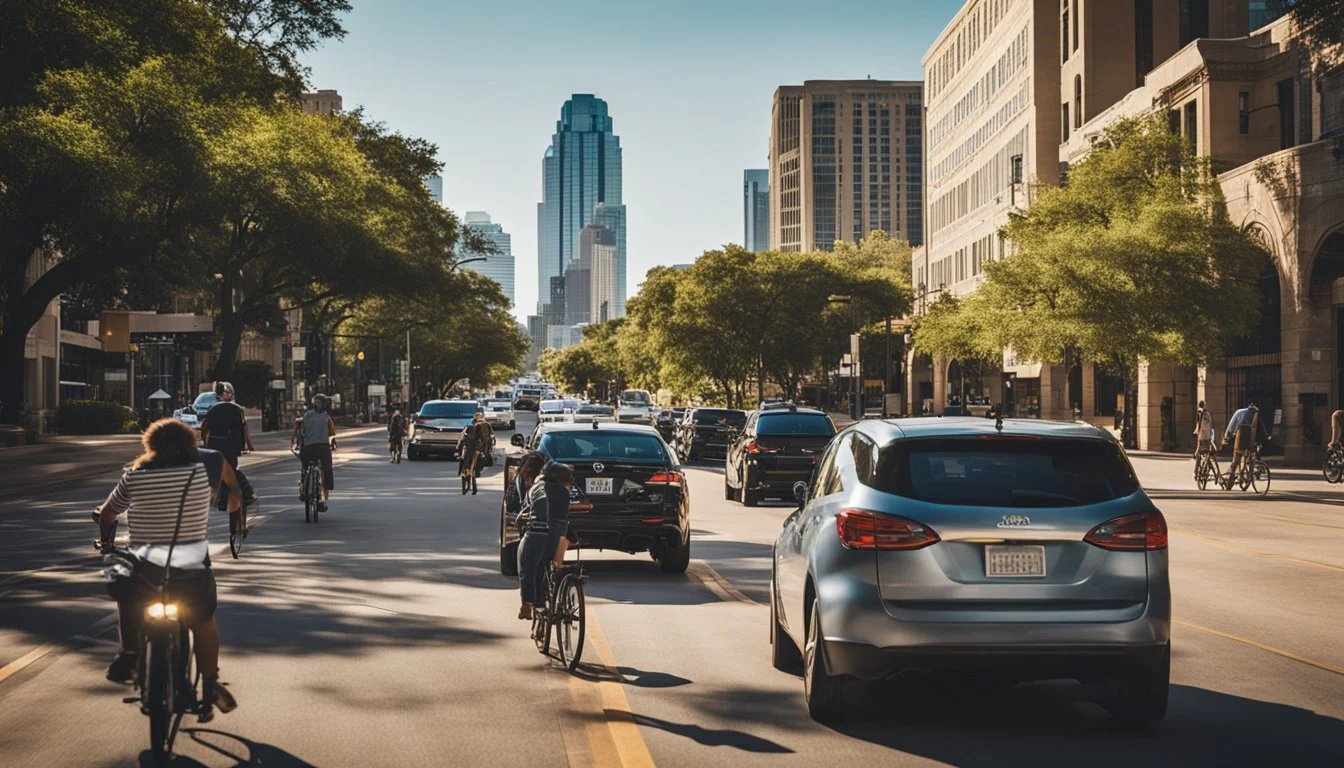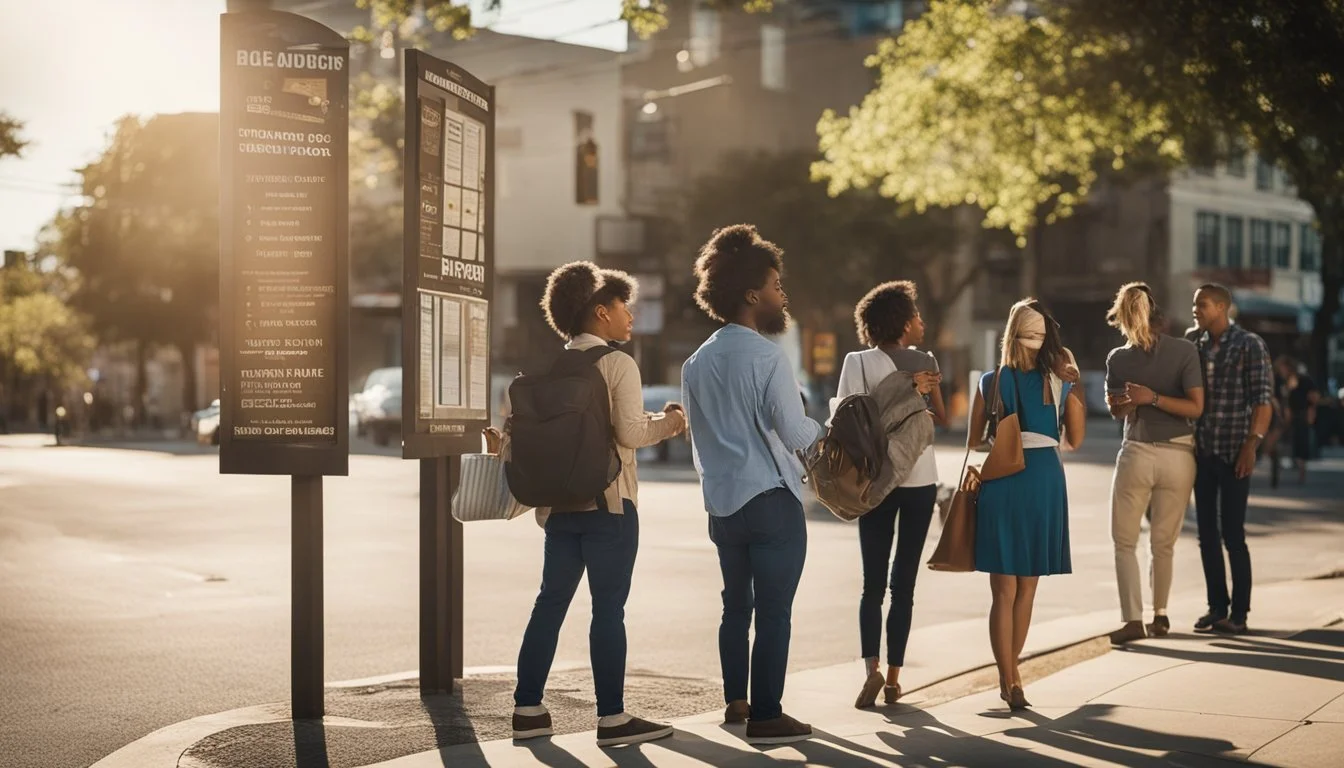Tips for Moving to Austin During the Summer
Stay Cool and Organized
Moving to Austin during the summer can be an exciting yet challenging endeavor. With its vibrant culture, bustling tech scene, and outdoor lifestyle, Austin attracts many newcomers each year. To ensure a smooth transition, proper planning is essential, especially considering the intense summer heat.
Austin's hot and humid climate can add an extra layer of difficulty to any move. The temperatures often soar into the high 90s, making it crucial to stay hydrated and cool throughout your move. Scheduling your move during the cooler parts of the day, such as early morning or late evening, can help ease the physical strain.
Consider hiring professional movers, as they can handle heavy lifting and navigate the logistics more efficiently. For those opting to move themselves, remember that preparation and organization are key. Investing in quality packing materials and taking the time to plan your route can make the process much more manageable. With these tips in mind, moving to Austin during the summer can be a stress-free experience.
Understanding Austin's Climate
Austin's summer weather is characterized by high temperatures, significant humidity, and occasional heat-related challenges. Knowing when to move and how to manage the heat can ensure a smoother transition.
Dealing With the Texas Heat
Summers in Austin are notably hot. Average high temperatures from June to August range from about 90°F (32°C) to 96°F (36°C) or higher. On some days, temperatures can exceed 100°F. The evenings often remain warm, typically not dropping below 75°F (24°C).
Humidity levels can elevate the perception of heat, making it feel even hotter. This can increase the risk of heat exhaustion. It's crucial to stay hydrated and take frequent breaks in shaded or air-conditioned spaces. Wearing lightweight, breathable clothing can also help.
To avoid the peak afternoon heat, plan activities for early mornings or late evenings. Austin's high temperatures and humidity can make moving during mid-day quite challenging.
Optimal Moving Times
Timing your move to avoid the hottest parts of the day can be beneficial. Aim to move in the early morning or late evening when temperatures are lower. These cooler times help reduce the risk of heat exhaustion and make the moving process more manageable.
Spring months, like April and May, offer milder weather conditions with lower humidity. This can be a more comfortable period for moving, though it may not be practical for everyone. If moving during the peak summer months is necessary, ensure to schedule breaks and have plenty of water on hand.
Consider checking weather forecasts to anticipate any extreme heat days, avoiding them if possible. Access to a reliable air conditioning system during the move can provide some much-needed relief.
Starting Your Austin Adventure
Moving to Austin during the summer offers an exciting opportunity to immerse yourself in the city's vibrant culture and music scene. This guide will help you navigate Austin's unique cultural landscape and its renowned status as the Live Music Capital of the World.
Exploring Austin's Culture
Austin's culture is a diverse mix of traditional Texan hospitality and modern urban sophistication. One of the first things you'll notice is the city's love for food trucks.
These mobile eateries offer everything from barbecue to tacos and Tex-Mex, providing a taste of local flavors.
The cultural tapestry of Austin extends beyond food. It's home to numerous museums, art galleries, and outdoor murals.
Taking a stroll through neighborhoods like East Austin reveals a wealth of street art and independent boutiques, offering insight into the creative heartbeat of the city.
In addition, summer in Austin is filled with festivals and outdoor events. Events like the Bat Fest and the Pecan Street Festival offer unique experiences that combine local art, music, and food.
These festivals are perfect venues to meet locals and soak in the city's vibrant atmosphere.
Live Music Capital of the World
Austin proudly wears the title of the Live Music Capital of the World, a nod to the city's dynamic music scene. Summers here are filled with live performances from a diverse range of genres.
Key venues like the Moody Theater and Stubbs Bar-B-Q host regular concerts that are a must-visit.
Outdoor music venues also take center stage in the summer. Zilker Park and Lady Bird Lake are popular spots for outdoor concerts, where you can enjoy the tunes along with Austin's natural beauty.
For those interested in smaller, more intimate performances, bars and clubs in areas like Sixth Street and the Red River Cultural District offer nightly live music.
Whether you're a fan of rock, country, jazz, or indie, Austin's live music scene has something for everyone. Attend a few shows to see why the city is a hotspot for both up-and-coming artists and seasoned performers.
Housing and Neighborhoods
Finding the right place to live in Austin can be a crucial part of your move. The city's diverse neighborhoods offer various housing options, and deciding whether to rent or buy depends largely on your financial situation and personal preferences.
Renting vs. Buying in Austin
The rental market in Austin provides numerous options for newcomers. The average rent for a two-bedroom apartment is approximately $2,160, though median rents hover around $1,800. Renters often find flexibility in location and shorter commitments.
Buying a home, on the other hand, can be a long-term investment. With average home prices around $407,400, purchasing might be suitable for those planning to stay for several years. Buyers benefit from building equity over time and possibly more stable housing costs.
Popular Austin Neighborhoods
Downtown Austin offers an urban lifestyle with easy access to restaurants, nightlife, and cultural attractions. Housing here mainly consists of condos and apartments, often at higher prices.
East Austin is known for its vibrant arts scene and eclectic mix of residents. Average rents are around $1,700, and the area has a mix of both families and young professionals.
South Austin features more residential spaces with a relaxed vibe, popular for families due to its schools and parks.
West Austin, including areas like Westlake, is notable for its upscale homes and excellent school districts.
Financial Considerations
Planning a move to Austin during the summer requires careful financial planning. Key financial factors include understanding the cost of living and creating a budget for the move.
Cost of Living in Austin
Austin's cost of living is higher than the national average. Housing is a significant expense, with average rents for two-bedroom apartments around $2,160 per month, though the median rent is approximately $1,800.
Homebuyers will find the average home price is about $407,400.
While Texas does not have a state income tax, other expenses such as utilities, groceries, and transportation should not be overlooked. Utilities, in particular, can be high during the hot summer months due to increased air conditioning usage.
Budgeting for Your Move
Creating a budget involves accounting for various expenses beyond just housing. These include moving costs, administrative fees for changing your driver's license, updating voter registration, and postal information.
Consider the seasonal increase in housing prices and rents. Also, set aside funds for moving supplies, professional movers, or rental trucks. It might also be beneficial to budget for the higher utility costs during the summer, as air conditioning will likely be necessary.
Setting up a thorough budget can help ease the financial stress of moving and ensure a smoother transition to life in Austin.
Planning Your Move
Before diving into your summer move to Austin, make sure you're well-prepared by focusing on key aspects like choosing a reliable moving company, setting up your space efficiently, and scheduling your move at the right time.
Choosing the Right Moving Company
Selecting the right moving company is crucial. First, research various companies and read customer reviews to gauge reliability. Websites like Yelp and Google Reviews can provide insight into past customers' experiences with different movers. Look for movers who specialize in summer relocations, as they will have strategies for managing high temperatures.
Obtain at least three quotes to compare prices and services. Ensure that the companies are licensed and insured. Verify their availability for your preferred moving date to avoid last-minute changes. Additionally, ask about any hidden fees or extra charges for packing materials and additional labor to avoid unexpected costs.
Setting Up for a Smooth Relocation
Preparation is key to a smooth relocation. Begin by decluttering and organizing your belongings. This not only reduces the volume of items to move but can also lower moving costs. Donate or sell items you no longer need. Create a detailed inventory list to keep track of your possessions.
Pack smartly by using quality packing materials. Label boxes by room and content, and keep essential items like toiletries and medications separate for easy access. Coordinate with your moving company to ensure they understand your needs and expectations. Utilize checklists to stay on top of tasks and avoid last-minute stress.
Consider the climate when packing. Protect sensitive items from heat exposure by using thermal wraps or planning for quick transit times. Make sure utilities are set up in your new home ahead of time to ensure a comfortable move-in.
When to Schedule Your Move
Timing is everything when moving to Austin in the summer. The city experiences peak moving seasons during this time, so booking early is essential. Aim to schedule your move at least six weeks in advance. This increases the chances of securing your preferred moving date and can help you find better rates.
Consider moving mid-week and mid-month when movers are less busy, which could save you money and provide more flexibility. Avoid holidays and the beginning or end of the month, as these are peak times for moving companies. Starting early in the day can also help you take advantage of cooler morning temperatures, making the process more comfortable for everyone involved.
By planning ahead and focusing on these key areas, you can make your move to Austin during the summer as smooth as possible.
Transportation and Getting Around
Moving to Austin during the summer requires understanding local transportation options. The city offers a mix of public transit, ride-hailing, and other alternatives, allowing residents to navigate traffic effectively and explore various neighborhoods.
Navigating Traffic and Transit
Austin is known for its traffic, especially during peak hours. Planning routes ahead of time can save both time and frustration. Mobile apps like Waze and Google Maps offer real-time traffic updates and alternative routes.
Several ride-hailing services like Uber and Lyft operate in Austin. Additionally, traditional taxi services are available, including Yellow Cab Austin and Lone Star Cab. For short trips, electric scooters and bikes scattered around the city can be convenient.
Parking can be challenging downtown. Public parking lots and garages are options but often fill up quickly. Using park-and-ride facilities combined with public transportation can be a good strategy for avoiding traffic hotspots.
Exploring Public Transportation Options
Public transportation in Austin is managed by Capital Metro. The MetroBus service is extensive, covering downtown, suburbs like Round Rock, and areas around the University of Texas campus. There are 11 high-frequency routes with buses stopping every 15 minutes or less.
For those looking to avoid traffic entirely, the MetroRail offers a rail service running from the northern suburbs to downtown. Tickets and schedules can be managed through the CapMetro App, making commuting straightforward.
For recreation, areas like Barton Springs and Lady Bird Lake are accessible via public transit. MetroBus routes can get you close enough to enjoy paddleboarding or a scenic bike ride along the trails.
Employment and Economy
Austin continues to be a magnet for job seekers due to its robust job market and burgeoning tech industry. The city is not just for those seeking tech jobs; it offers opportunities across various sectors with competitive salaries.
Austin's Job Market Overview
Austin's job market boasts rapid growth, supported by the city's expanding population. Numerous industries are flourishing, providing a diverse range of employment opportunities.
The job market benefits from both traditional sectors like education and healthcare and emerging fields. Unemployment rates are often lower compared to national averages. The influx of new residents further stimulates job creation and economic stability.
The Growth of Tech Industry
The tech industry is a significant driver of Austin's economy. Major tech companies such as Apple and Dell have established extensive operations here.
Austin is sometimes referred to as "Silicon Hills" due to its concentration of high-tech companies. The industry offers a wide array of jobs, from software development to hardware engineering. Salaries in the tech sector are competitive, often exceeding the city’s median income.
The growth of the tech industry has led to an increase in high-paying jobs, attracting talent from around the world. This continual inflow of tech professionals contributes to Austin's economic dynamism.
Education and Community
Austin, Texas boasts a diverse educational landscape and vibrant communal life, which play critical roles in attracting new residents. The city offers numerous schooling options and university campuses, alongside a rich cultural ethos embodied in the local mantra: "Keep Austin Weird."
Schools and Universities in Austin
Public schools in Austin are managed by the Austin Independent School District (AISD), renowned for its robust programs and extracurricular activities. Top-rated schools include Liberal Arts and Science Academy and Bowie High School.
Charter and private schools, such as KIPP Austin Public Schools and St. Andrew's Episcopal School, provide alternatives for tailored education.
Higher education is anchored by the University of Texas at Austin, a leading institution with extensive research facilities and a student population exceeding 50,000. Other notable institutions include Austin Community College and St. Edward’s University, catering to diverse academic needs.
Building a Sense of Community
Austin's community is characterized by its inclusivity and eclectic culture. Neighborhoods like East Austin and South Congress are hotspots for local events and activities.
Community centers, such as the Austin Recreation Center, offer programs and classes that cater to varying interests, fostering connections among residents.
Local festivals, like South by Southwest (SXSW) and the Austin City Limits (ACL) festival, provide ample opportunities for engagement and celebration of local culture.
Nonprofits and volunteer organizations, such as Keep Austin Beautiful and Austin Pets Alive!, invite new residents to contribute to the community, allowing them to meet like-minded individuals and truly integrate into life in Austin.
Lifestyle and Recreation
Austin offers a blend of vibrant outdoor activities and a diverse food and drink scene, making it a great place for those who enjoy both nature and culinary delights. The city's landscape includes parks, lakes, and an eclectic mix of eateries and breweries.
Outdoor Activities and Parks
Austin's outdoor scene is renowned for its variety. Zilker Park is a central hub, offering green spaces, picnic spots, and the refreshing Barton Springs Pool. The Hill Country provides scenic trails, perfect for hiking and biking enthusiasts.
Barton Creek Greenbelt also has paths for both hiking and biking, along with swimming holes and climbing spots. Lady Bird Lake is a favorite for kayaking, paddleboarding, and rowing.
The Mueller neighborhood offers extensive trails and parks, suitable for a leisurely urban escape. Austin's outdoor options cater to all kinds, from thrill-seekers to those seeking relaxation.
Austin's Food and Drink Scene
Austin’s culinary scene is a highlight, with a myriad of choices. The city is famous for its smoky BBQ, with renowned spots like Franklin Barbecue.
Breweries are plentiful, producing a variety of craft beers. Places like Bouldin Creek also offer cozy spots and tasty dishes focused on local ingredients.
The Mueller development area hosts food trucks and local restaurants, ensuring there are plenty of options. Austin's food and drink scene is diverse, ensuring there's something for every palate.
Ready, Set, Move
Before diving into the move itself, it's essential to wrap up any final preparations and make a plan for settling into your new home in Austin efficiently.
Final Preparation for Relocation
Start by confirming your moving date with your chosen moving company. Summer is peak moving season, so securing your spot early can help avoid any last-minute issues. Make sure you have all necessary supplies like boxes, packing tape, and bubble wrap.
Label your boxes clearly with the contents and destination room to make unpacking easier. Handle administrative updates such as changing the address for your driver’s license, voter registration, and postal information to avoid future hassles.
If you have pets, especially dogs, consider their needs and the Austin heat. Have a plan in place to keep them cool and comfortable.
Settling Into Your New Home
Once you’ve arrived in Austin, prioritize unpacking essential items first. Setting up your kitchen and bedroom can help bring a sense of normalcy quickly. Explore your new neighborhood, whether it’s Franklin, East Side, or near Lamar Boulevard, to get acquainted with local amenities.
For families, finding nearby parks and activities can make the transition smoother. If you have pets, identify local parks and consider how you will keep them cool during walks. Being proactive about these steps ensures a smoother transition into your new Austin home and allows you to settle in more comfortably.








